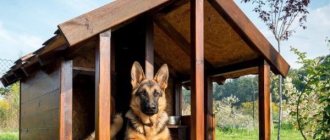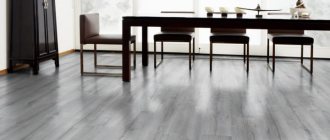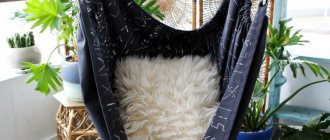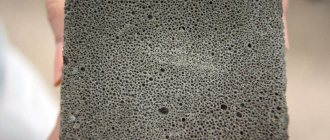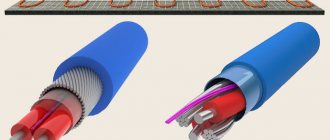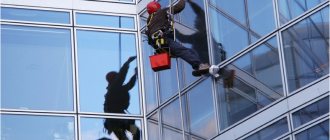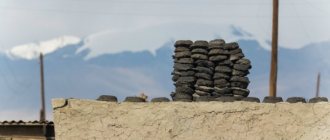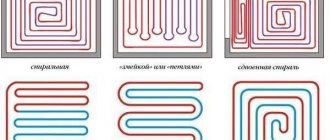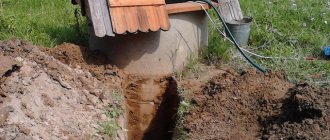Do-it-yourself outdoor for a private home
These are popular in dachas and large estates for large guard dogs. Keeping them chained is inhumane to the animal and irresponsible in terms of protecting your property. The chain was relevant when the local area was small. With the increase in the local area, this has lost its meaning: if at least some area is inaccessible to the dog, then the house is not protected.
In addition, a dog on a chain is an easy target for a serious thief, and losing a pet guard is not only sad, but also very expensive. After all, a well-trained guard dog is expensive. All this together is a compelling argument for making a house with your own hands, and letting the animal in there and letting it out at night.
Interesting: it has been proven that an animal living in an enclosure shows less aggression than one living on a chain. This is important if, in addition to the dog, there are children living in the house.
The following argument against building an enclosure often arises: the dog is friendly and roams freely around the area. Let's say the dog is really safe for everyone in the household, but what to do if your neighbors, guests, or utility workers come to the site? To avoid frantically starting to come up with ways to isolate a large animal, it is better to take care of this in advance.
Important : the outdoor enclosure must be a full-fledged home for the dog.
Indeed, guard dogs have been domesticated for a long time and today they need a cozy kennel and territory that they will protect. If you build an outdoor enclosure for a dog, following all the rules, spacious and cozy, it will not be perceived as a cage.
Collapsible aviary
Outdoor enclosures for dogs can be either prefabricated, dismountable, or stationary. The first ones are more universal; they can be moved or removed at any time as unnecessary, for example, if the enclosure was placed on a summer cottage and is not needed in winter.
These enclosures can also be called differently: permanent - a whole complex for keeping a dog, with a booth, a bed and a walking area; or simply a fenced area of territory - temporary .
Functions of an outdoor enclosure:
- restriction of free-range territory;
- ensuring the safety of the animal;
- protection from weather conditions (cold, rain, etc.);
- satisfying the dog’s desire to isolate itself from time to time, the need for its own territory.
Important : for an outdoor enclosure, it is important to have a walk - a spacious area in the fresh air, which will allow the pet not to sit locked up all day.
Aviary with walking area
Aviary layout:
Dimensions
Before you properly build a home enclosure with your own hands on the site, you must prepare a drawing so as not to make a mistake with the size and quantity of materials needed. The dimensions of the building are chosen based on standards developed by experienced dog breeders. You also need to take into account the breed of your pet.
The size of the enclosure will depend on:
- size of the animal;
- its breed;
- number of dogs in the building;
- the purpose of the enclosure - will the dog live there permanently, or walk around the territory.
The minimum area of a dog's house on the street is calculated based on the height of the animal at the withers:
- up to 50 cm – 6 sq. m;
- up to 60 cm – 8 sq. m;
- from 60 cm and above – from 10 sq. m.
Drawings with dimensions:
Other parameters are also calculated based on the animal’s body : the width must be at least one and a half body lengths (but without the tail). At the same time, you should not make the width less than 1.5 meters, even for small dogs. The length is calculated by area and width.
For the enclosure you need to calculate the height. To make this more difficult: you need to lift the dog by its front legs until it stretches to its full length. You will need an assistant to measure the distance from the front paws to the ground. Then you need to add another half meter to the resulting figure - this is the minimum height.
Important: there are especially jumping breeds of animals. For example, huskies are now fashionable: in their homeland, these dogs jump very high, this helps them navigate the endless white snow. To prevent the dog from jumping out of the enclosure, you will have to raise the walls higher.
All the above figures were given per animal. For two adult dogs, this area will need to be increased by one and a half times. The enclosure for a female dog with babies should be even larger, because the animals will actively explore the world.
You also need to pay attention to the breed : huge enclosures are perfect for large or active breeds - they will be able to warm up at any time. But bigger is not always better: a small dog in a large room will get lost in every sense. She will be scared and uncomfortable there.
Important : an outdoor enclosure is not suitable for permanent habitat of dwarf breeds; they do not overwinter in our climate.
The enclosure for breeds such as husky and alabai , which often appear in private homes, deserves special attention. What kind of enclosure should be for them?
Husky , as already mentioned, jumps well, so if you don’t want to catch it all over the area, raise the walls higher. This dog is also very active and sociable. In general, she is not suitable as a guard animal: she is too loving and gets bored easily. An enclosure for her can be set up only for the purpose of constant walking: the house will be a bit cramped for her. Even though the breed does not exceed 60 cm at the withers, it will need an area of 10 to 15 squares, with an aspect ratio of 2:3.
The size of the enclosure for the Alabai must correspond to this giant: in a small enclosure (as well as on a chain), the animal will quickly become embittered and become dangerous for the owner. This dog can also surprise with its jumping ability: an adult Alabai is able to jump over a height of about 3 m.
So before you build a do-it-yourself pen for your home, be sure to think it through carefully!
Materials
The main criteria here are safety for the owner and the animal . That is, the dog should not break free, nor should it be injured while trying to do this, or simply while living in an enclosure. If the building is stationary, one wall should be made blank, made of wood or even brick.
Often, in order to save money, the enclosure is attached directly to the wall of the house or to the fence:
Very stylish dog run
The remaining walls are made of lattice, from:
- Wooden or metal rods. Rods are the most reliable option, and this type of fencing is also easy to repair.
- Chain-link mesh. Chain-link mesh should only be used when there is not enough money for anything else: this cheap material can harm the dog. She can scratch herself on it, or break her teeth trying to gnaw through the mesh. But the chain-link is very easy to install.
- Forged. Forged enclosures are very beautiful, durable, but at the same time expensive.
- Made from galvanized pipes. A structure made of galvanized pipes will require considerable effort at the construction stage, but then it will last a long time.
Important : no matter what material you choose, you need to take care of its coating. The metal is coated with a special paint that prevents corrosion, and the wood is impregnated with a composition that will provide protection from rot and wood-boring beetles.
A winter outdoor enclosure must have a winter road! The winter road is a separate, carefully insulated room adjacent to an enclosure with a warm booth. We recommend that you build just such enclosures - they are the most profitable and convenient for your pet:
Building walls
How to do it yourself? The walls of the enclosure serve as a fence for a dog that wants to go outside. They bear the brunt of the load, so pay special attention to them. Before building walls, you need to take care of the foundation. There are several options here:
- The perimeter of the future structure is outlined, a trench is dug and a strip foundation is made.
- A columnar foundation is made only in those places where the supporting elements will be installed.
It is impossible to build walls without a foundation: the soil will subside over time, and the enclosure may become damaged.
Outdoor enclosures, as a rule, are built from metal or durable wood so that, in case of emergency, it can withstand the pressure of a large adult animal. In addition, an enclosure made of such materials will last a long time if it is used correctly.
A good option for an animal is a brick enclosure ; it will be warm and cozy, neither rain nor wind will get inside.
You can also make the enclosure out of wood: it’s easier, because you don’t have to do the masonry yourself. Often these options are combined: one brick wall and three made of metal lattice. Or a frame is welded from steel pipes and then sheathed in wood.
In practice, the best option is a welded rod fence . It is done according to this scheme:
- Make a frame.
- Make a lattice from cut rods, welding the fittings to a metal frame from a corner. The distance between the bars for large dogs is 10 cm, for others - approximately 5.
- Connect the frame to the support pillars using the same welding.
- Check whether all the elements are securely welded, or whether they are simply stuck: with a strong push, the animal will knock them out.
- Treat the structure against rust.
Important: a door must be built into the walls.
It should not be done in a blank wall: it is comfortable for the animal to see that someone is approaching it and will come in now. You should make sure that the door opens inward and not outward, otherwise your pet will easily knock it down. And in a fit of joy when greeting the owner, the dog can hit him with the door.
The door here is not made perfectly
Floor
So, let's build the floor! Gender is no less important. The trampled ground is definitely not suitable: some dogs like to dig around, and will quickly render the enclosure unusable. And the raccoon dog and a number of other breeds will dig their way to freedom without much effort.
The other extreme - a floor filled with concrete, “so as not to crawl out”, is also undesirable. These floors are cold, especially in winter, which will cause your dog to suffer and may get sick. A couple of years on a concrete floor and problems with paws are guaranteed .
It's best to stick with wood floors . They are warm and easy to install.
To make such a floor, you need:
- Prepare boards about 40 mm thick and rectangular beams.
- Treat the material with an antiseptic.
- Make a frame for the deck.
- Lay the boards on the frame, adjust the seams, then secure the flooring with self-tapping screws. The heads of the screws need to be recessed and puttied so that the dog does not get hurt.
- Paint the floor or varnish it.
Important : do not skimp on paint; a cheap and toxic product will damage a dog’s sense of smell, and without painting at all, the floor will quickly rot.
Making a roof
To build the roof, slate, tiles, corrugated sheets, siding or regular tarpaulin are used. The main thing is that the material does not resonate from wind and rain; this will damage the dog’s hearing, which is no less sensitive and subtle than the sense of smell. Soft tiles or fabric will solve this problem. Most often, the roof is made of the simplest, pitched roof.
Important: the roof must have a gap for ventilation, because heat and stuffiness are very harmful for the dog.
An excellent option is an awning . First you need to build a metal or wooden frame, and then stretch a fabric roof over it. The material must be waterproof. But the problem is that it’s difficult to sew such a tent yourself, and it’s not cheap to buy.
Chain-link enclosures with a tent roof. Not suitable for permanent housing
The simplest option is made of slate, siding or corrugated board. In this case, the frame is also built first. The roofing of the enclosure is laid on a reliable, well-sanded roofing system.
Feeder
The main stages of construction are behind us, the question remains of what the future inhabitant of the enclosure will eat from. There are several requirements for the feeder:
- raised above the ground to a height of 20-30 cm, that is, at the height of the lower edge of the dog’s chest, depending on its size. It is undesirable for these animals to eat from the floor, it is harmful to the back and paws;
- There are separate areas for food and water. Mixing must be avoided;
- the presence of a rotating mechanism in the feeder and the ability to fix it. This way, not only the owner, but also other people will be able to feed the dog safely in his absence.
The easiest way is to simply weld several bowls to the rods, but they will not spin. For the rotating device, a small rectangular frame is planned in advance in the frame, into which the rotating device of the feeder and drinker is inserted.
Scheme drawing:
How to make the toilet comfortable for the animal and the owner?
And finally, an important part of any enclosure is the toilet. It is advisable to immediately train the animal to relieve itself in one place, otherwise the number of general cleanings in the enclosure will increase from one annual, scheduled one to infinity. You can do it like this:
- Prepare a vessel suitable in size for the dog: from a bowl to a basin.
- Make a cutout in the floor for the toilet, placing it at a distance from the feeder and the booth.
- Temporarily cover the hole with board or plywood.
- Let the dog into the enclosure. For a while she can relieve herself anywhere.
- When the animal gets used to it, its waste is collected, but not thrown out. The dog needs to be taken out of the enclosure and cleaned up.
- After cleaning, the toilet is put back into place. The bowl is filled with sand and the pet's waste is placed on top.
- The dog is released into the enclosure. Now she will go to the toilet in the designated place, perceiving it as marked by herself. Sand is needed so that the animal can rummage; it will have to be changed periodically.
The method does not always work; sometimes the dog relieves itself everywhere. To make cleaning easier, the floor in the enclosure in this case is made with a slight slope towards one of the side walls or towards the facade. So it’s easy to wash off the sewage with a hose; with some skill you don’t even have to go inside.
What is an aviary
An aviary is a fenced area for keeping poultry, pets and dogs. It may or may not be covered.
One of the options for respectable pets
A dog enclosure is a building in which an animal can be kept. For large dogs, the enclosure is made outdoors, and in such a way that it can withstand the pressure of the animal for a long time.
This is an enclosure (fence) for small dogs
For small domestic dogs, an enclosure usually means a portable fence that allows you to limit their movement. The same enclosures are usually needed for older puppies, so that they do not wander around the house.
Photo
Elite enclosure designs: notice how beautiful they are!
We especially like the forged bars on the enclosures:
Modular:
With booth:
An original solution to build an enclosure made of bricks:
For a large dog, be sure to make a pen with a walk:
For two or three dogs:
Choosing a location for an aviary in the yard
You want to make an enclosure so that your pet feels good, so you need to take into account its character and habits. While in the enclosure, the dog will continue to guard its territory, so it is best to fence off the area on a hill, if there is one. It is very good if the entrance to the house, the entrance to the site is visible, or at least it will be possible to track one of these important points. When choosing a place, keep in mind that your pet needs to see you at least from time to time. You or family members. Otherwise, whining and howling are guaranteed, especially if the dog is not used to restrictions.
When choosing materials, keep in mind that everything that can be chewed will be chewed
When choosing a location, pay attention to the following points:
- It is better to retreat at least half a meter from the nearest building or fence, otherwise you will not be able to clean the debris from there.
- The enclosure should not be in danger of snow melting. If a huge mass suddenly falls onto the roof with a corresponding sound, the dog will receive a shock. It will be very difficult to drive her into an enclosure.
- The structure must be unfolded so that the open part faces southeast or southwest. In the northern regions, it is preferable to go south. Just don't go north.
- It’s not bad if there is a massive bush or spreading tree nearby - they will protect you from the wind and heat.
Taking all these wishes into account is far from easy, but it depends on how well the pet will feel.
Construction stages
It’s right to start construction with a drawing of an enclosure for a dog. This will allow you to correctly calculate the amount of material required and immediately visually represent the construction project.
The enclosure starts with a solid foundation. It is quite expensive to pour the entire foundation, but it is necessary to concrete the support pillars. For pillars, you can use a square pipe.
How to make a dog house for the winter
Construction begins with calculations. The size of the winter kennel should be optimal: the dog will be cold in a spacious mansion.
The dimensions of the booth are calculated depending on the size of the dog.
AlabaevForumHouse Member
The dog will warm itself with its own breath. Space is not needed here.
DIY insulated dog house.
When building a warm booth, use this table as a guide (dimensions are for an adult dog):
Warm booth dimensions
| Height of the manhole (entrance) to the booth | The height of the dog at the withers is 5 cm. |
| Manhole width | The width of the dog's chest is +5 or +8 mi. |
| Booth width | The length of the dog from nose to tail. |
| Booth height | Dog height |
| Booth depth | Height of the dog. |
The resulting dimensions of the winter booth can be slightly increased, but cannot be reduced.
You can calculate a winter kennel for a dog, taking into account which group it belongs to in terms of its dimensions (small, medium, large):
Internal dimensions for building a warm dog house with your own hands
| Small breeds (dachshund, shiu tzu, etc.) | 700x550 millimeters, height h=600 mm. |
| Medium-sized breeds (Rottweiler, Shar Pei, etc.) | 1200x750, height h=800 mm. |
| Large dogs | 1400x1000, h=950 |
Homemade
Enclosures are installed in the apartment if required:
- temporarily demarcate the territory when a newborn or a family member unfamiliar to the dog appears (if he is distrustful of strangers), another dog, or a cat;
- create a safe space for a puppy or several;
- give the dog a personal corner if for some reason there is not enough “space”: the dog, for psychological reasons, needs a fenced space, is not trained enough and, in the absence of its owners, spoils things, shows aggression towards family members.
Typically, an apartment enclosure is a lightweight prefabricated structure in the form of a fence. Often its role is played by a cell.
Floor
We had already decided earlier that we would make the floor from wood. There are no special subtleties here; the shield is made of planed dry boards 35 mm thick.
The wood should be treated with an antiseptic and space under the floor should be left for ventilation.
Video description
How it works is clearly shown in the video:
This feeder will allow you to feed the dog without entering the enclosure, which can be very important with large and aggressive animals, especially in the absence of the owner.
Kennel installation
The size and type of kennel is a topic for a separate substantive discussion. Without going into details, we note the main points of its design and installation:
- The arrangement and installation of the kennel must be taken care of before building the enclosure, otherwise it may not fit through the gate.
- The best material for its manufacture is wood.
- The structure can be made autonomous or stationary, in the form of a fenced-off compartment in an enclosure.
- The kennel should be placed on a wooden platform, with the exit facing a windproof wall.
- It is advisable to insulate the floor and walls of the house by making it two-layer and laying heat-insulating material between them.
An example of an insulated dog house with a removable roof
Advice! There is no need to make the kennel too spacious. Its height should be approximately 1.2-1.5 times the height of the animal at the withers, and the area should be such that it can freely turn around on it. A small area contributes to better and faster heat accumulation in cold weather.
Roof structure
The roof for an enclosure is usually made of a pitched roof, with a gutter along the lower overhang. Its design is extremely simple:
bars with a cross-section of 5x5 cm are laid on the top trim of the frame in increments of 60-70 cm;
a sheathing of edged or unedged boards is nailed across the bars;
Sheet roofing material is screwed onto the sheathing - metal tiles, slate, polycarbonate, profiled metal sheet. The removal of the roof along the entire perimeter should provide protection for the enclosure from slanting rain.
Roofing diagram
You should know that corrugated sheeting for this design is not the best choice. It gets very hot from the sun and amplifies the sound of rain. When using it, it is advisable to lay sheets of foam plastic or other insulating material between the rafters and hem the ceiling from below.
Projects
How to make an enclosure that is useful for the dog and the owners? Define the task. What kind of design is required:
- summer - with a fence, space for walking, a special canopy for protection from precipitation and a resting place (it can be combined with a wooden canopy or a summer booth);
- year-round - in addition to the walking area, a winter house or booth with insulation (2-4 m2) is required;
- “dormitory” - if the dogs are not at odds, the walking area is common, otherwise it will have to be demarcated. Each dog has an individual house;
- The “maternity hospital + nursery” is equipped to meet the needs of the puppy and then the bitch who gave birth; space is provided for raising puppies.
Choosing material
Dog housing is made in different ways, using different materials, but wood or mesh attached around the perimeter is usually used. These materials are quite reliable for indoor use and for keeping animals. The dog will constantly jump on the walls, so the requirements for strength are increased.
To choose the right material you need to consider some features:
- If the floors are made of boards, then they need to be raised 10 centimeters from the ground and painted on the outside to protect them from moisture. The inside of the boards cannot be painted. This may affect the pet's health.
- The roof must be built from any materials that do not allow leakage.
- The structure of the room must be calculated without unnecessary gaps between the side wall and the roof. Don't forget about the visor.
Adviсe
- It is better to lay a large piece of linoleum under the enclosure : let the edges look outside the house, but at the same time they are tightly attached to the walls - this way you will save the floor from urine and damage. Under no circumstances should you make a floor out of multiple pieces of any material. As soon as the puppies discover the junction, and this will happen quickly, they will wet themselves with delight and immediately begin to chew on it.
- If the room is poorly heated, then it is better to insulate the enclosure. Place a piece of insulation or a padding polyester blanket under the linoleum.
- While the puppies are small, you can put a diaper (or newspapers) on the linoleum and a foam mat on top. It will let moisture in, but will remain dry itself. This way, the puppies will always have dry bedding, and their paws will not slip on such a surface. The rug is easy to wash, dries very quickly, does not absorb odors and retains its good appearance for a long time.
Door
Dog handlers recommend that the door opens into the enclosure. This will protect you from being hit if the dog might jump. An exception is possible only if the size of the building does not allow such an approach.
Also use the advice - do not make the door on the side of a solid wall. The dog must see the person entering in advance. Be sure to provide, in addition to a reliable external latch, the ability to close the door behind you from the inside.
